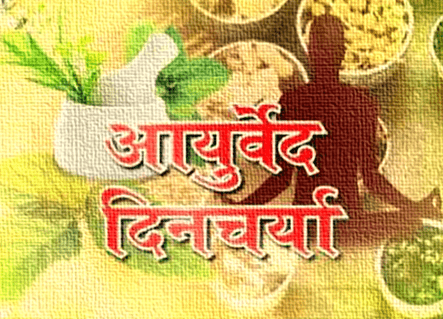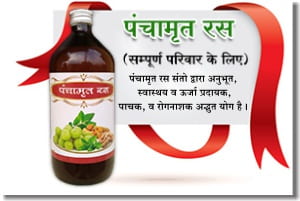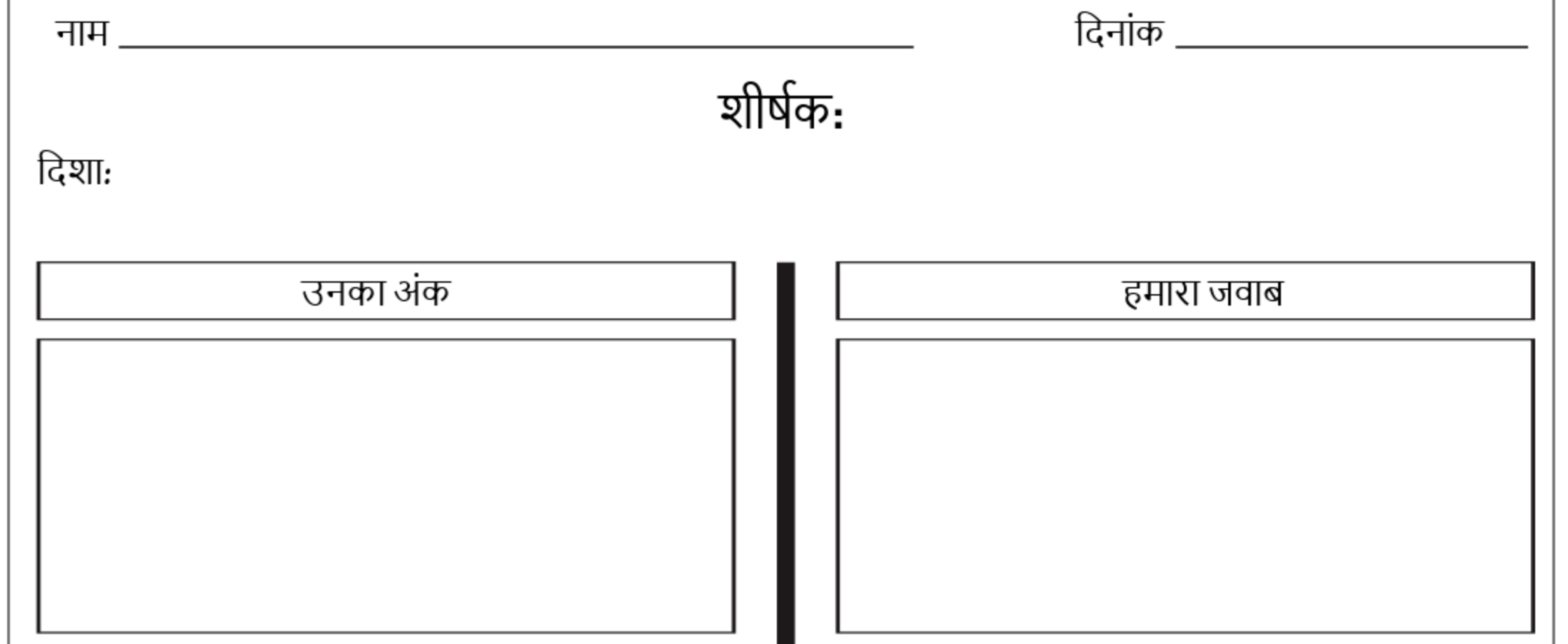 Based on a lesson developed by Bhavya Singh
Based on a lesson developed by Bhavya Singh
Proficiency: Advanced Range
Time: 4×75
Mode of Instruction: Online
Students: HLL/FLL
Lesson Title: Emergence of Ayurveda as a new holistic approach to balanced healthy lifestyle
Essential Question: Does existing evidence strongly support the claim that the western 24/7 lifestyle is has a negative impact on human health? How specific lifestyle approaches help us maintain better health?
Objectives: Students will be able to:
- understand the methods of the Ayurvedic holistic approach to health (diet and detoxifying) in order to achieve healthy lifestyle goals. (Interpretive)
- understand the main points and related details that entail Panchakarma, detoxifying and rejuvenating programs for the body. (Interpretive)
- discuss and explain the importance of adopting daily Ayurvedic routine as a way to cleanse and restore one’s body, mind and spirit to a natural state of balance. (Interpersonal)
- participate in an online discussion about the benefits and challenges of switching to a vegetarian Ayurvedic diet. (Interpersonal)
- debate with peers various options to suggest Ayurvedic/Yogic lifestyle as holistic lifestyle approach vs. the Western lifestyle of health and fitness. (Interpersonal)
- present an argument for or against adoption of Ayurvedic holistic lifestyle with supporting evidence. (Presentational/FLL)
- explain in an online journal/ blog giving a rationale for Ayurvedic lifestyle and dietary practices to promote healthy living and restore balance. (Presentational/ HLL)
Infographics, Rubrics, Charts:
- Public speaking rubric
- Journal writing rubric
- Compare & contrast graphic organizer chart
- Daily routine chart
- Food chart
- Facts and perspective graphic organizers
- Academic vocabulary for extended conversation found in instructional materials.
- Debate Rubric Guidelines
- Conducting a debate information sheet
- Determining debate content guidelines sheet
- Reflective blog word bank
- Reflective blog rubric guidelines
- Letter of appreciation rubric guidelines.
- Zoom
- Online blogs & journaling
- Info graphics
- Book creator
- Voice Thread
- Google tools of education
Target Language Structures:
- Subordinate conjunctions: यद्यपि, यदि, तथापि, अगरचे
- Inflected infinitive: की वजह से, के करणवर्श
- Inverted compound postposition: के बिना, के बजाय
- Routine imperfective: नित्य सवेरे, रोज़
- Absolutive expressions
- Formation of adverbs: कृपया, सम्भवत
Resources:
आयुर्वेद क्या है?
आयुर्वेदिक आहार के नियम: https://navbharattimes.indiatimes.com/lifestyle/recipe/according-to-ayurveda-what-when-and-how-to-eat-food/articleshow/71256689.cms (text and vocabulary )
- https://www.amrutam.co.in/ayurvedictipsabouteatinghealthy/
- https://www.livehindustan.com/news//article1-story-437615.html
- https://hindi.webdunia.com/article/ayurveda/आयुर्वेद-अनुसार-भोजन-के-तीन-प्रकार-108021400058_1.htm
- https://navbharattimes.indiatimes.com/lifestyle/health/ayurvedic-diet-foods-to-eat-according-to-weather-in-hindi/articleshow/74254985.cms
आयुर्वेदिक दिनचर्या: https://readerblogs.navbharattimes.indiatimes.com/pratibha-kiran/daily-routine-according-to-ayurveda/(text and vocabulary)
- https://readerblogs.navbharattimes.indiatimes.com/pratibha-kiran/daily-routine-according-to-ayurveda/ (text and vocabulary)
- http://www.ashram.org/Teachings/Healthy-Living/Ayurveda/ArtMID/2138/ArticleID/10478/दिनचर्या
- https://aajtak.intoday.in/story/ayurveda-panchkarma-1-958818.html
- http://www.jaisiyaram.in/panchakarma.htm
Real World Performance Tasks:
During Virtual International corporate health & wellness conference, students in the role of Ayurveda Intern practitioners, participate in an online debate advocating innovative approaches to incorporate the Ayurvedic lifestyle in the daily routine to achieve well-balanced healthy living instead of 24/7 lifestyles.
Learning scenarios:
Pre-Activity: In groups, students explore at least one article from each section. They choose to focus on at least five main details and create infographic/chart along with an audiofile, which they upload on Voice thread.
- Vata, Pitta, Kapha body composition and diets
- Winter, summer, autumn, Spring Ayurvedic cooking grocery list
- Good & bad Ayurvedic food combination chart
- Ayurved cleansing ingredients
- Aspects of Panchakarma
Learning Episode 1: (Class discussion/Peer school session)
- Jigsaw: In new groups, students exchange information about the information they gathered from the pre-activity resources on different type of body composition according to Ayurveda, different food categories, aspects of Panchakarma and Ayurvedic cleansing technique. They take notes of the new information they hear from their peers in a column with their name on a group Google doc.
- Students return to original group and compare the practices and methods of the western 24/7 lifestyle vs. Ayurvedic/Yogic lifestyle by filling out a Venn diagram.
- Students prepare and discuss 3 main arguments for or against adopting Ayurvedic/Yogic holistic approach to healthy living.
- Each group shares their arguments (10-15 minutes) in an open session and express their reasons for presenting these arguments.
Check for learning: Teacher observes and facilitates group discussions during breakout room sessions. Teacher looks for inclusion of culturally appropriate verbal and non-verbal language, accuracy of content, vocabulary and language structures and evidence of critical thinking.
Learning Episode 2: Debriefing/ Reflection/ New learning (Expert interview)
- During open zoom session students exchange information and perspectives obtained from native speakers highlighting areas of uncertainty or unclarity. On a google doc, students develop a set of questions for an Ayurvedic practitioner to better understand what the holistic lifestyle benefits are and how one can transition to Ayurvedic lifestyle.
- Students conduct an interview with an Ayurveda practitioner and seek his/her opinion on the claim that 24/7 lifestyle is detrimental to human health and Ayurvedic holistic lifestyle and detox approach are better options.
- Students identify the main take-aways and perspectives obtained from the Ayurveda expert and write a summary in bullet format of most relevant information and perspectives gained from the expert and share with the class.
Learning Episode 3: Transfer/Application of learning (online debate)
Students exchange information in a online debate discussion about what they have read, heard or viewed about 24/7 lifestyle and the holistic lifestyle and cleansing practices in preparation for a debate on “Whether we should adopt Ayurveda Holistic living and cleansing practices as part of our lifestyle” using the “Determining Debate Content Guidelines Organizer” to assist in composing written notes for each round as follows:
1. Students prepare their position based on the following points and submit a google doc:
वाद-विवाद अभिकल्पना
वाद-विवाद में भाग लेने के लिए निम्नलिखित गितिविधियों की पूर्ति करें:
| 1. मेरा पहलू क्या है? |
| 2. मेरे पहलू से कौन या क्या प्रभावित है? |
| 3. मेरे पहलू की तीन दलीलों की सूची: |
| 4. मेरे पहलू के समर्थन में समर्थन में सबूतों का वणन: |
| 5.विपक्ष का क्या खंडन हो सकता हैं? |
| 6. मेरे पहलू को कैसे कमज़ोर बना सकते हैं? |
2. Students record and upload a video recording of their contribution to the debate (for or against the motion) on Class Voice Thread for viewing, feedback and suggestions by peers. Each student uploads a comment with one point they agree with the most and one they disagree with and explain why.
3. Based on VT contributions, teacher creates the debate groups (proposition team and opposition team: पक्ष या विपक्ष दल)
4. Teacher familiarizes students with the rules of the debate:
वाद-विवाद के नियम:
- प्रत्येक दल को अपने विचारों की प्रस्तूति करने हेतु २० मिनट समय दिया जाएगा
- तदुपरांत १० मिनट का समय प्रश्न-उत्तर के लिए दिया जाएगा
and the evaluation (1-3 points each – maximum 12):
मुल्यांकन निम्नलिखित गुणों के आधार पर किया जाएगा:
- विषय की सारगर्भिता और तार्किक क्षमता
- दल की भाषा — वकपटुता और व्याकरण की विशेषताएँ
- प्रस्तूतिकरण, शैली और अमौखिक संचार (शारीरिक भाषा: शरीर की मुद्रा, चेहरे की अभिव्यक्ति, इशारों और आँखों की गति)
- रचनात्मकता और ध्यान-आकर्षक पद्धति
5. Teacher assigns the roles: business executive team of a pharmaceutical/detox company & Ayurveda practitioners’ team .
6. Debate Stages:
- compose an opening statement
- define the motion (issue)
- briefly summarize their position to accept (proposition team) or suggest alternate approach (opposition team)
Round 2: Student groups:
- develop main arguments
- consider multiple perspectives
- address focused counter arguments about the motion (issue).
Round 3: Student groups create questions to ask opposition team for the cross examination.
Round 4: Students compose a closing statement.
D. Debates: Students actively participate in online class debate in their assigned roles
Check for learning: Teacher observes the online exchange of information on Ayurvedic and western lifestyle in preparation for the debate and during all phase of actual debate looks for time component, inclusion of culturally appropriate verbal and non-verbal language, accuracy of content, vocabulary and language structures and evidence of critical thinking.
The debate session is video recorded. Teacher notes patterns of weaknesses and addresses the target language structures by reformulating sample sentences from student output to illustrate use.
Students fill out the debates form.
Learning Episode 5: Extended Learning
Students compose an electronic letter of appreciation to the visiting Ayurveda Practitioner, thanking him/her for presenting and for providing their perspectives on 24/7 lifestyle of 21stcentury & Ayurveda lifestyle and Cleansing techniques. Students follow the following letter writing rubric guidelines:
- Use of culturally appropriate form of address
- Acknowledge the expert’s contribution to their professional field
- Include the perspectives you have gained from his/ her presentations
- Explain why you agree or disagree with his/ her perspective
- Indicate how the presentation has inspired you and the classmates to advocate for Ayurveda holistic lifestyle and Cleansing practice as an approach for well balance healthy lifestyle
Students write a blogpost making a strong case for or against the urgent need for lifestyle intervention through Ayurveda and its method of cleansing to address the health problem associated with 24/7 lifestyle.
Create a online book on Book Creator application using 8-10 copyright free images depicting 24/7 lifestyle and write appropriate Ayurveda alternative as a solution (e.g. fast food > obesity vs. Ayurveda diet plan)


